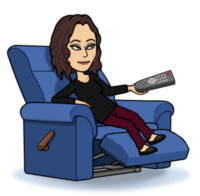
As the number of school closures across the globe continue to rise, remote learning has come into the forefront. The term sounds promising – students continuing to learn from a distance. Fortunately, technology can serve to support remote learning. Students who have access to devices and wifi can choose from a wide variety of online resources to explore academic content. The internet has allowed students to continue learning outside of the school walls. And this is fantastic. But access to content is not the most important piece of remote learning. Particularly in the case of remote learning, through which students and educators are isolated from one another, relationships are vital.
Connect with Students
Many of our students are facing uncertainty. Some are struggling with increased anxiety as schools and businesses close. Others are concerned about their parents’ abilities to make ends meet. Now, perhaps more than ever before, is the time for educators to connect with students. Technology allows us to do just this. I urge educators that on a daily basis, they connect with their students face to face, remotely, through the power of video. In some contexts, this may be done through a video conferencing software at a set time via platforms such as zoom or google meet. In other contexts, learning must occur asynchronous. These educators record a video and share it with students to view when they are able. The video can be shared on a number of platforms (i.e. Class Dojo, YouTube, Google Classroom, Seesaw). The key is that students see your face every day. This maintains consistency and maintains a connection from school to home, even in the case of school closures. In designing a remote learning experience, the daily connection is first.

Foster Collaboration
Many educators are disseminating a great deal of content to students and parents. Lists of virtual resources for remote learning continue to grow each day, to the point that it can feel overwhelming to teachers, students, and parents alike. But resources by themselves are not a magic bullet. Students benefit from speaking with one another, from building upon each others’ ideas, from collaborating. Enter – technology. Today, students can engage in academic discussions with their peers with free tools designed specifically for education. Verbal discussion platforms such as flipgrid, digital discussions within an LMS, and collaborative features of files within Google for Education and Microsoft Office 365 provide many opportunities for students to connect with each other regarding their learning of content.
Feedback to Students
As students engage in remote learning, educators validate learners when they provide feedback. Some educators leave students in the “content” portion of the lesson design protocol above. They are unsure of how to reach the “synthesize learning” portion of the protocol. Technology gives us the ability to provide feedback to students based on artifacts they submit digitally. The artifacts students submit, as evidence of their learning, need not have been created digitally. Students can take pictures of sketches they drew or models they built via engineering challenges. At this stage of the lesson design protocol, technology allows educators to collect evidence of student learning digitally, and respond. Platforms that support this may include seesaw, google classroom, canvas, other LMS platforms, and class dojo, among many others.
As you consider the remote learning opportunities you provide for your learners, be sure to remember the most important piece – human connection.
